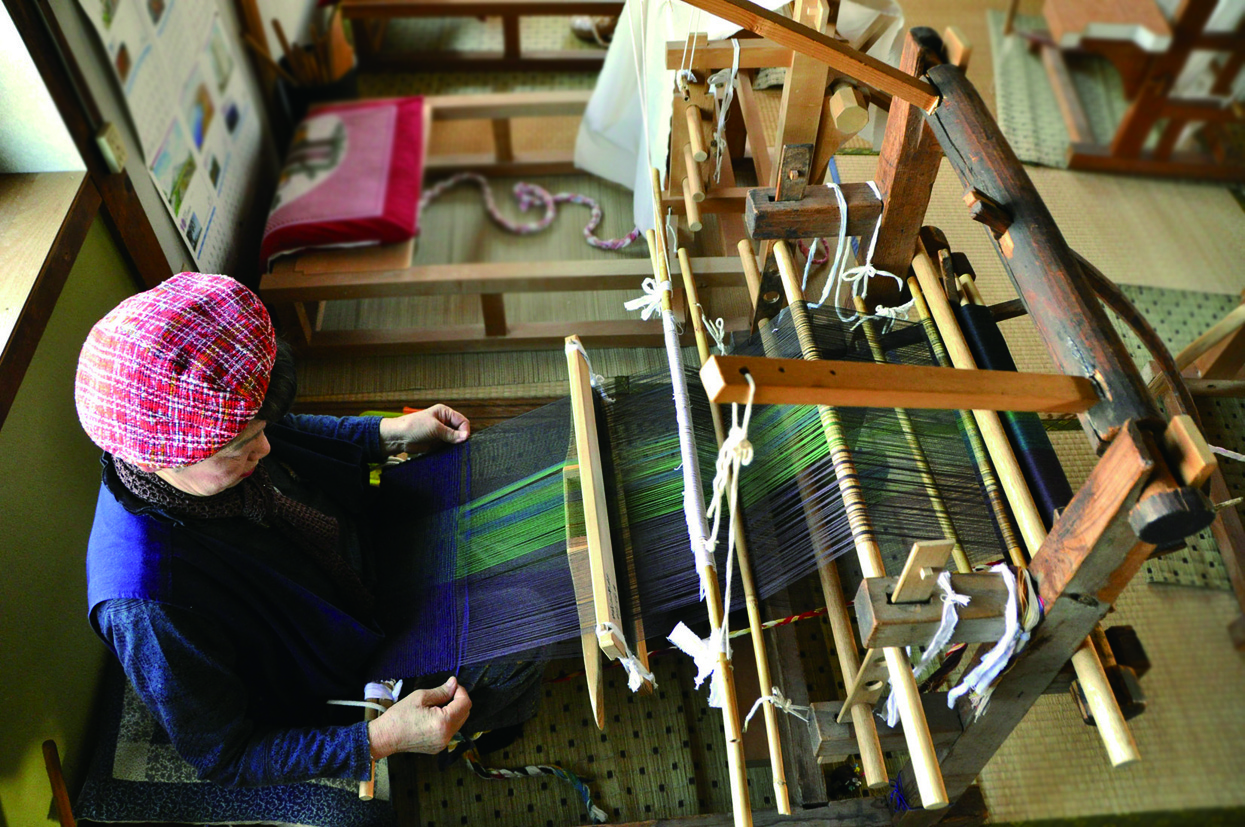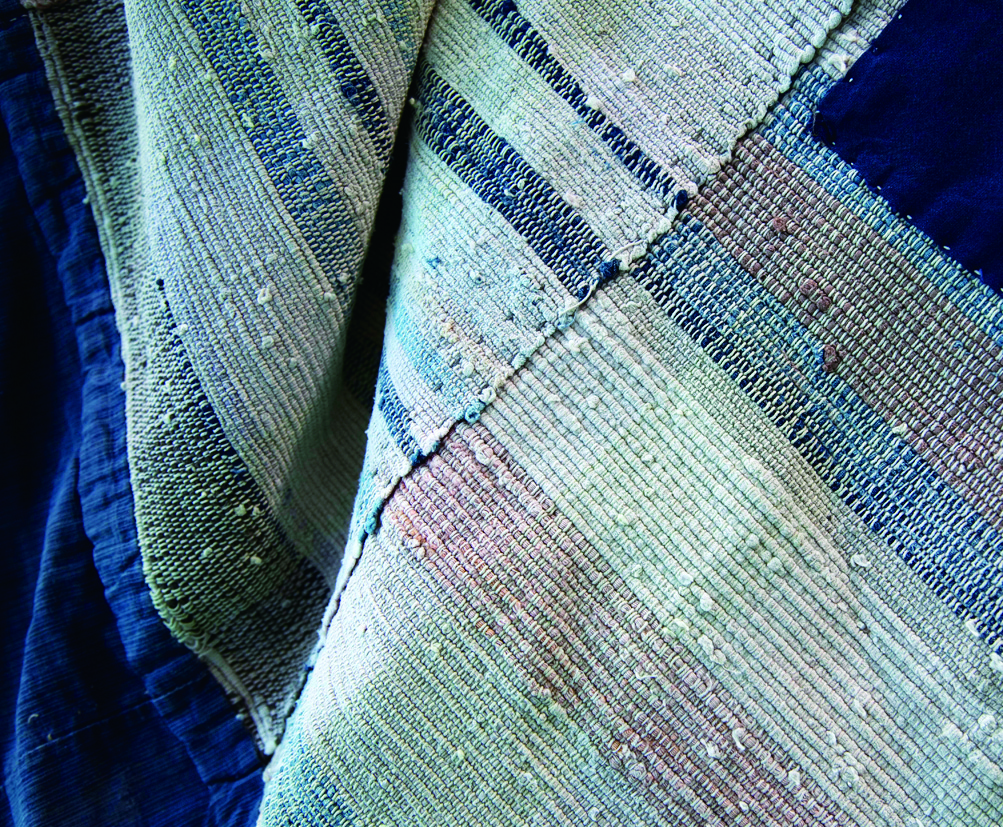南部裂織
Pronunciation: Nambu Sakiori
Production area: Hachinohe City, Aomori Prefecture
The term sakiori refers to a weaving technique in which old cloth is torn into strips and used as weft threads. It originated from the handwork of women in Aomori and eventually spread throughout Japan. In the snowy regions of the Edo period, cotton could not be cultivated, making cotton cloth a valuable commodity. This led to the development of sakiori(rag-weaving technique using torn cloth strips) as a way to reuse old garments and fabric remnants. Strips of cloth were woven into hemp warp threads set on a ground loom, producing sturdy work clothes and other items. Characterized by the beautiful colors and patterns created through the skillful combination of old fabrics, sakiori flourished in the Nambu region during the late Edo and early Meiji periods. However, weaving declined after 1948 when the Cannabis Control Act prohibited hemp cultivation and weaving. Yet, because looms, obi, and kotatsu covers remained in local households even after the war, the late Ms. Eiko Kanno, inspired by a treasured heirloom obi, founded the Nambu Sakiori Preservation Society and began teaching sakiori at her home. Her efforts laid the foundation for the revival of Nambu Sakiori as both a practical and artistic traditional craft.
Types of Sakiori
・Hira-ori (Plain Weave): The most basic form of weaving.
・Zaguri-ori: Similar to plain weave, but strips of cloth and yarn are alternated as weft.
・Weaving with Wool Yarn: Uses wool yarn instead of cloth strips for the weft.
・Ichimatsu-ori (Checker Weave): Based on plain weave, with two colors of warp threads arranged alternately during warping.
・Tsuzure-ori (Tapestry Weave): Incorporates two colors of patterned weft along with the main weft, intertwining them partway to form motifs.
・Hikaeshi-ori (Return Weave): A method where the color of the weft is changed mid-weave, creating diagonal designs.
・Medama-ori (Eye Pattern Weave): Produces eye-shaped patterns within the plain weave fabric.
・Yabane-ori (Arrow Feather Weave): Uses two colors of yarn or wool twisted together during weaving, then twisted in reverse on the return to form arrow feather patterns.
・Ajiro-ori (Basket Weave): Alternates two colors of warp threads, arranged above and below in stripes about 4 cm wide.





















